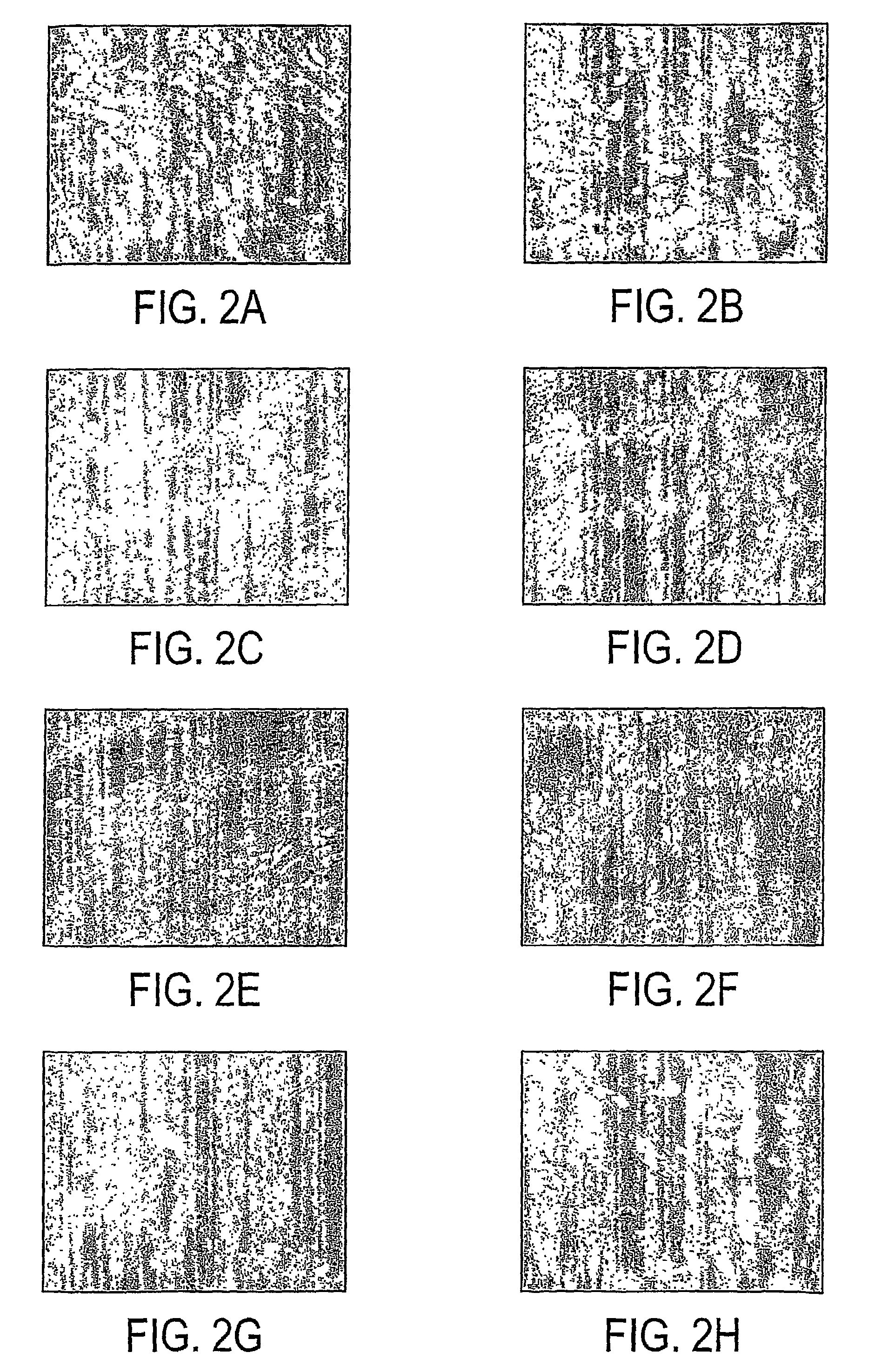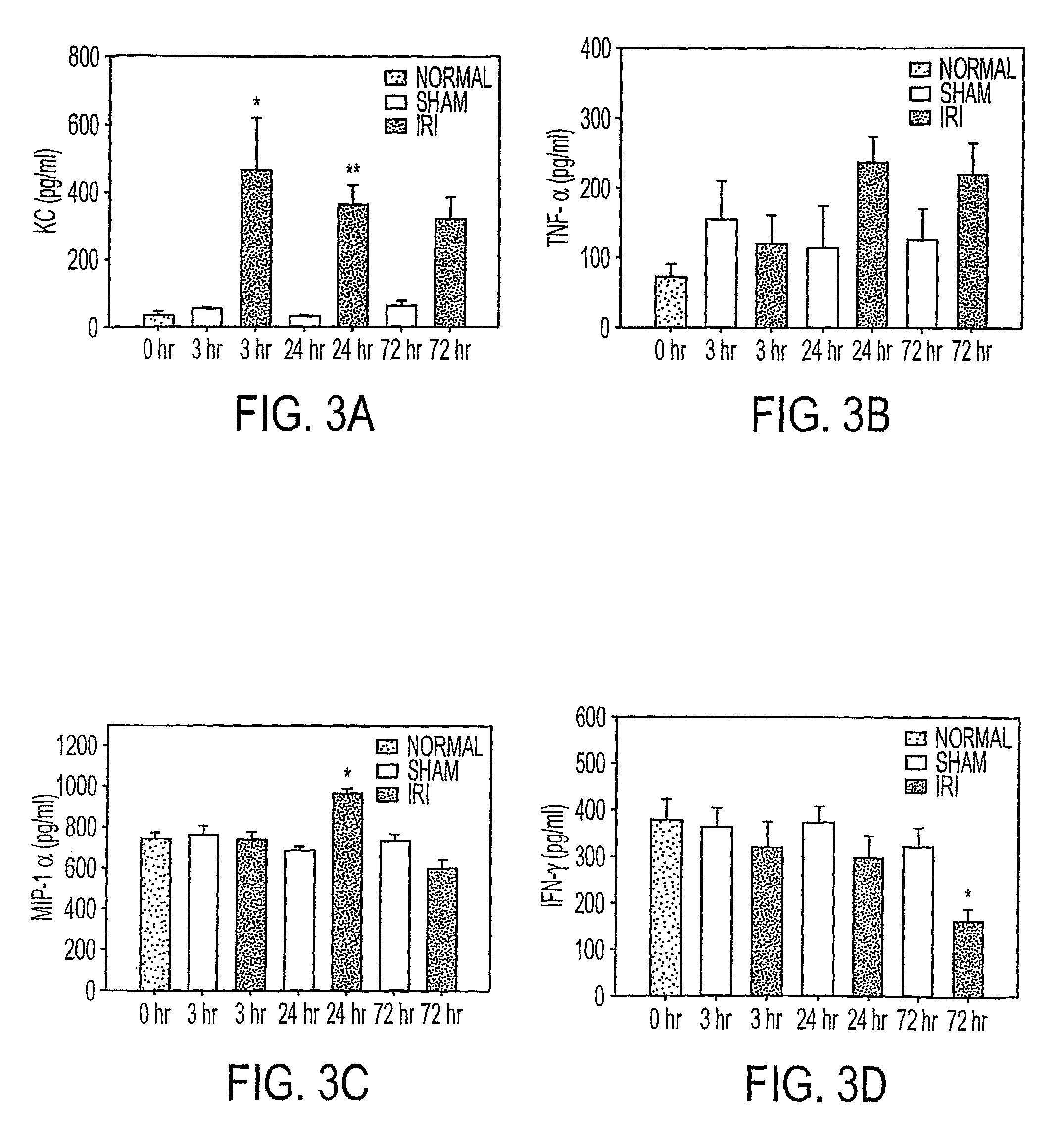Acute renal injury
a renal injury and acute technology, applied in the field of acute renal injury, can solve the problems of lack of clinically feasible diagnostics for early detection, none of them have been fully validated or are in routine clinical use, etc., and achieve the effect of reducing lung damage, reducing morbidity and/or mortality, and reducing mortality risk
- Summary
- Abstract
- Description
- Claims
- Application Information
AI Technical Summary
Benefits of technology
Problems solved by technology
Method used
Image
Examples
example 1
Materials And Methods
Animals
[0036]Male C57BL / 6 mice were obtained from The Jackson Laboratory (Bar Harbor, Me.) and housed under pathogen-free conditions, according to NIH guidelines.
[0037]An established model of renal IRI was used (14), and sterile techniques were followed at all times. Briefly, mice weighing 25-30 g were anesthetized with an i.p. injection of sodium pentobarbital (75 mg / kg). Bilateral flank incisions were made, and the kidneys were exposed. Following abdominal incisions, renal pedicles were bluntly dissected and a non-traumatic vascular clamp (Roboz microaneurysm clamp; Roboz Surgical Instruments, Washington, D.C.) was applied across each of the pedicles for 30 min. During the procedure, animals were kept well hydrated with warm saline and at a constant temperature (37° C.). After 30 min of ischemia, the clamps were removed, the wounds sutured, and the animals were allowed to recover with free access to food and water. Sham animals underwent sim...
example 2
[0046]There is significant data that early inflammatory changes underlie the pathogenesis of renal IRI (3; 8; 11; 15; 21). We therefore used a mouse model of renal IRI to examine kidney, blood and urine for evidence of changes in cytokine and chemokine expression using a protein array adapted to small volume samples. The earliest and most striking change was an increase in keratinocyte-derived chemokine (KC), a CXC chemokine that is structurally homologous to rat cytokine-induced neutrophil chemoattractant (CINC) and human growth-related oncogene-alpha (Gro-α) (19). KC levels were elevated in serum within one hour of renal ischemia in the mouse, and increased in kidney tissue and urine within three hours. To begin to evaluate the clinical significance, we examined humans with ischemic injury following a renal transplant and found a correlation of urine Gro-α levels with kidney injury that required dialysis. These studies provide evidence that KC and its human analogue, Gro-α, could ...
example 3
Cytokines and Chemokines in Murine Renal Tissue
[0048]We utilized a cytokine multiplex assay to determine protein levels of 18 cytokines / chemokines in kidney tissue from normal (no surgery), and sham-operated (surgery but no renal artery clamping) or IRI mice at intervals after surgery. KC levels in ischemic kidney tissues were significantly increased 3 h postischemia compared to normal and sham groups (P<0.05) (FIG. 3). There were also significant early increase in IL-6 and IL-12(p40) at 3 hours after ischemia in IRI mice compared to sham operated mice (FIG. 4). TNF a showed a trend to increase with time post-ischemia. Meanwhile, IL-1α, IL-2, IL-4 and IFN-g showed significantly decreased / decline trend during time course in IRI mice when compared to sham group. MIP-1α was significantly higher 24 h after IRI compared to all groups (P<0.05). No differences were noted across groups for levels of IL-1β, IL-3, IL-5, IL-10, IL-12 (p70), IL-17, GM-CSF and RANTES (data not shown).
PUM
| Property | Measurement | Unit |
|---|---|---|
| temperature | aaaaa | aaaaa |
| IFN-γ | aaaaa | aaaaa |
| time | aaaaa | aaaaa |
Abstract
Description
Claims
Application Information
 Login to View More
Login to View More - R&D
- Intellectual Property
- Life Sciences
- Materials
- Tech Scout
- Unparalleled Data Quality
- Higher Quality Content
- 60% Fewer Hallucinations
Browse by: Latest US Patents, China's latest patents, Technical Efficacy Thesaurus, Application Domain, Technology Topic, Popular Technical Reports.
© 2025 PatSnap. All rights reserved.Legal|Privacy policy|Modern Slavery Act Transparency Statement|Sitemap|About US| Contact US: help@patsnap.com



